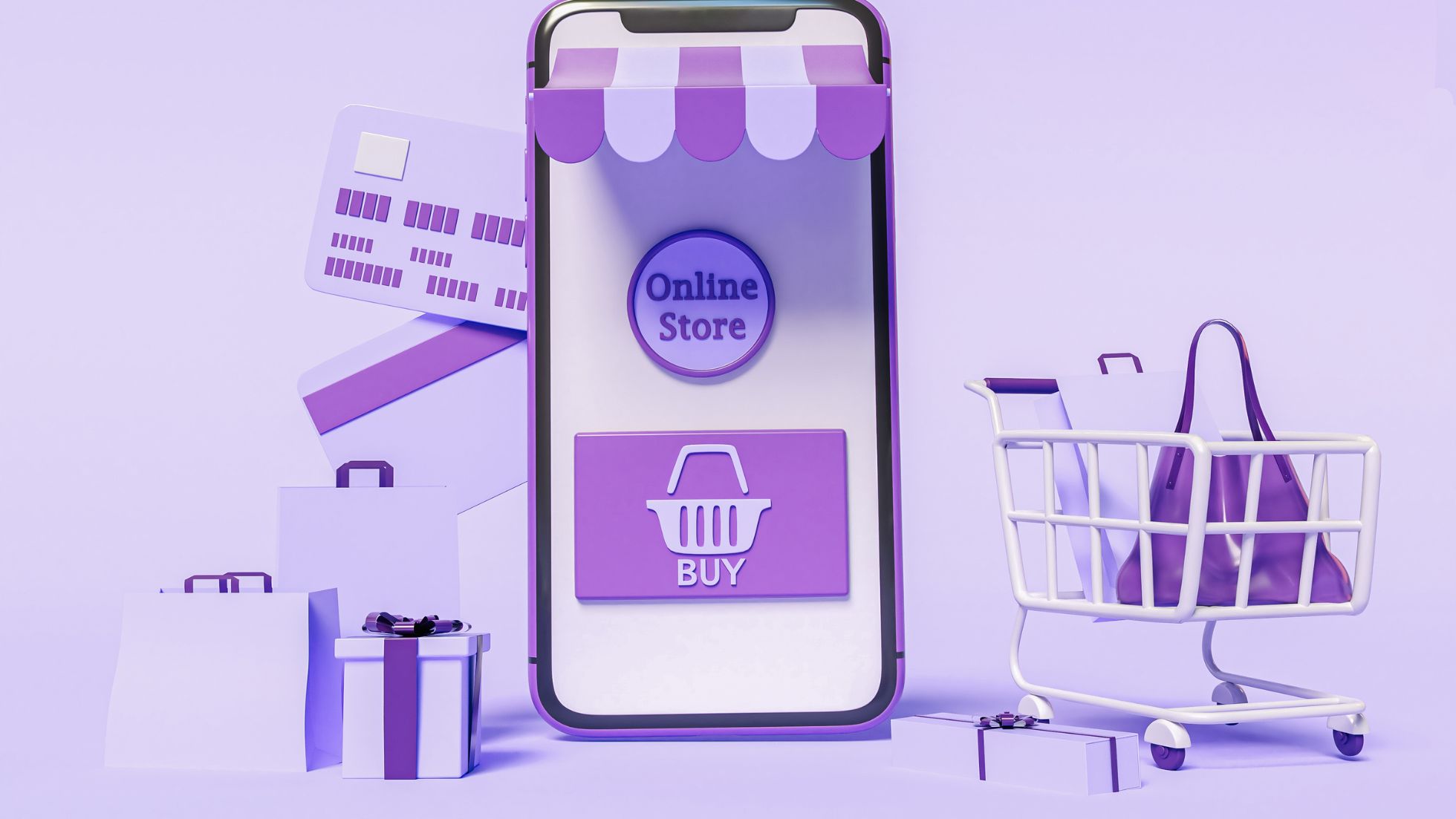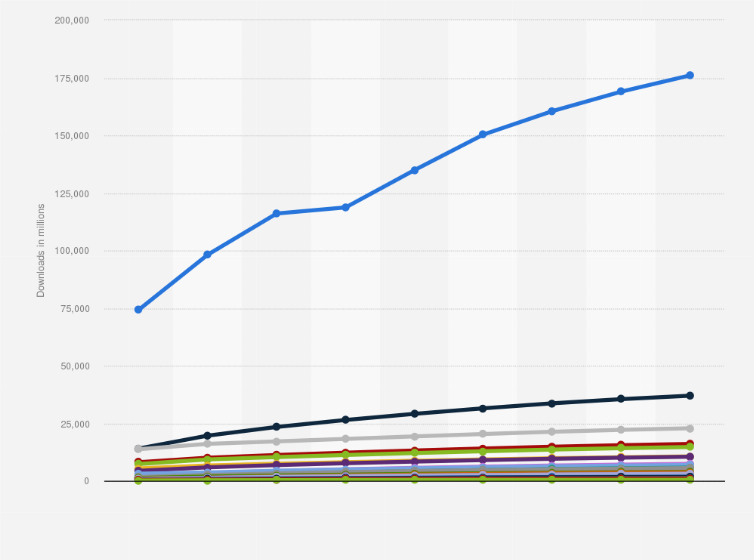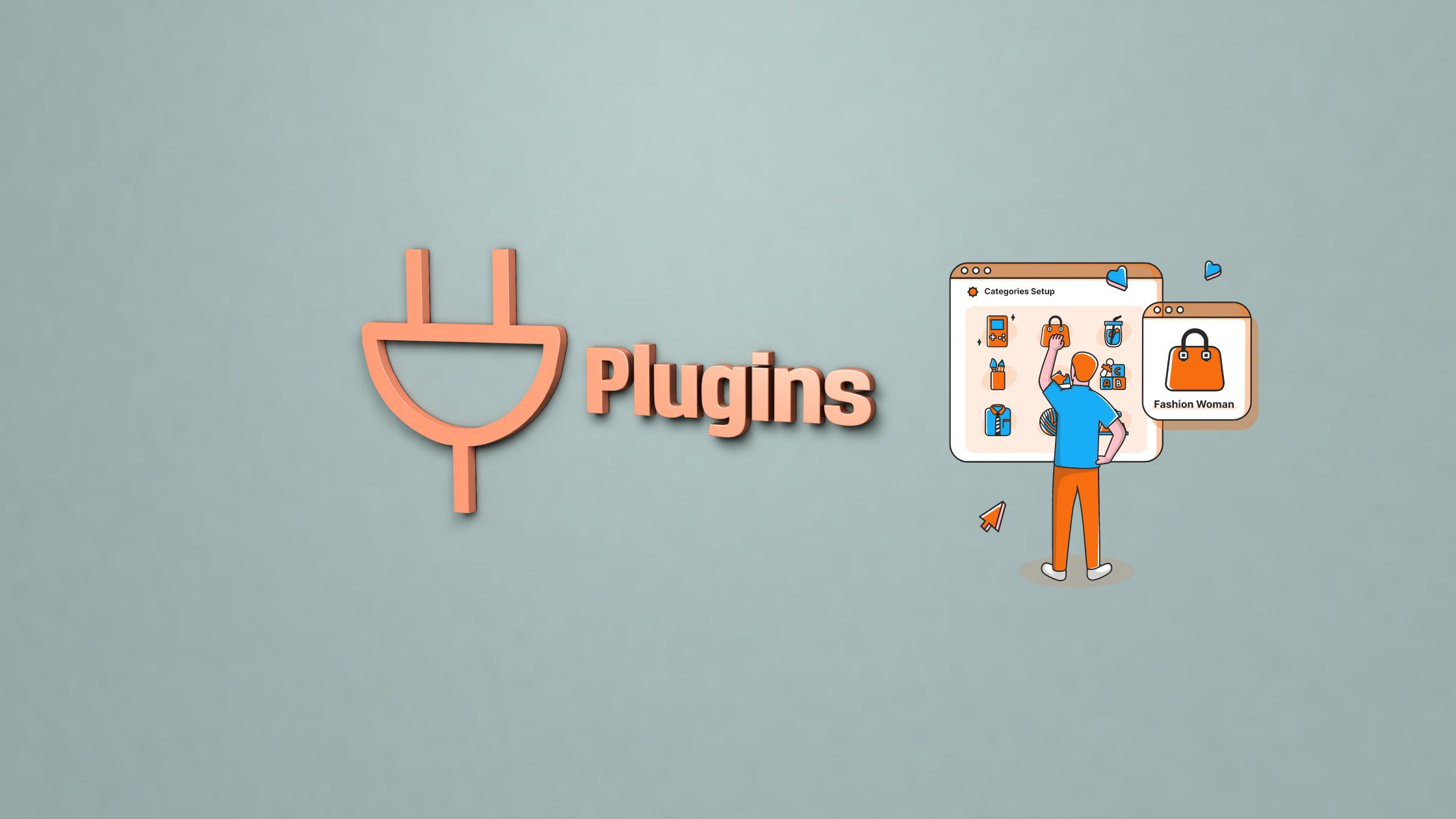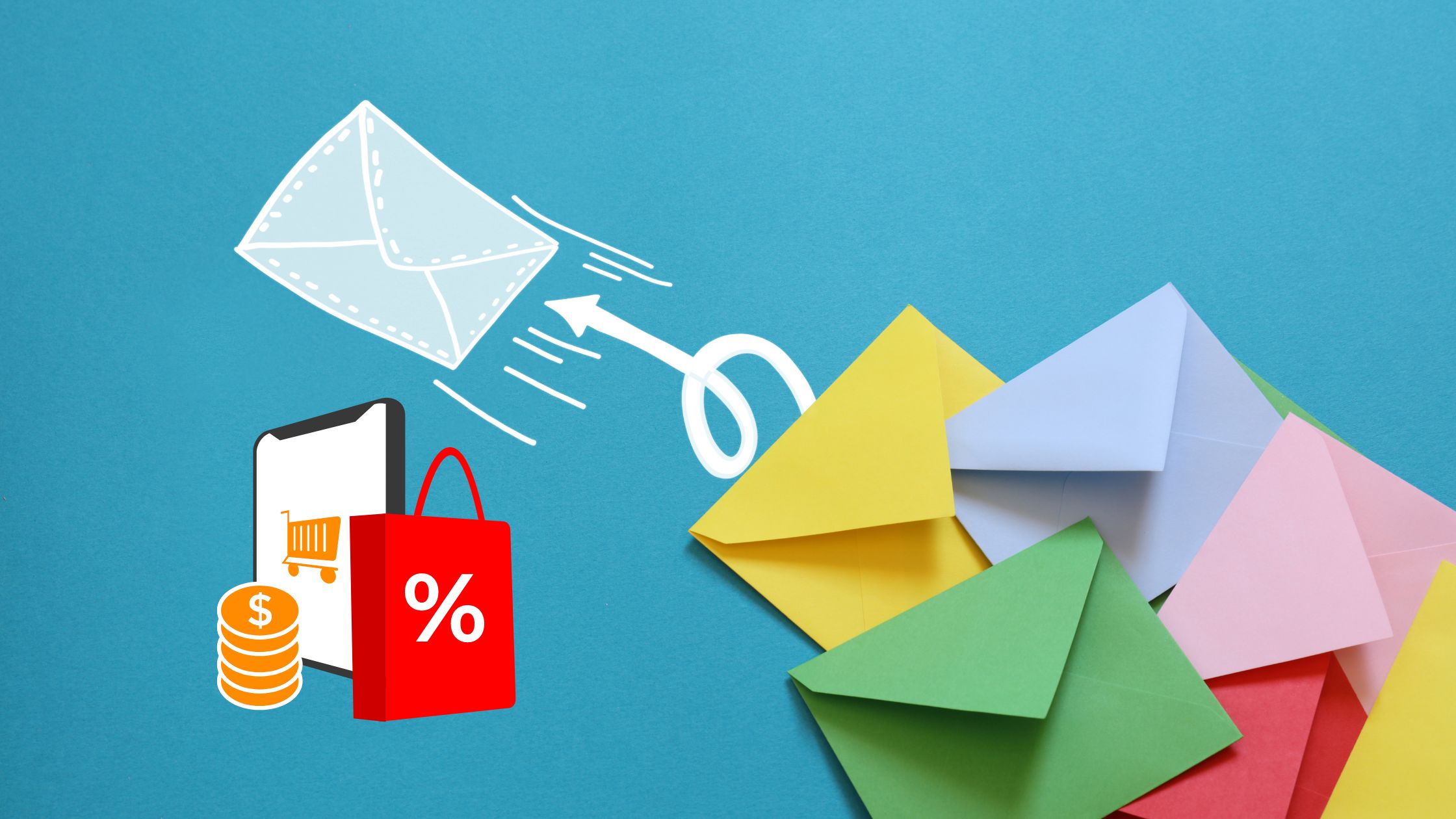 Apps
Apps
How Much Does It Cost to Develop an E-commerce App for Startups, SMEs and Enterprise in 2024
An e-commerce app serves as a gateway to a broader audience, providing startups, SMEs, and Enterprises with unlimited opportunities. But the question looms large: How much does it cost to develop an e-commerce app? Let’s embark on a journey to unravel this query, exploring the intricacies of ecommerce app development costs and the myriad benefits it brings.
Benefits of Developing an E-commerce App for Startups, SMEs, and Enterprise
In the competitive landscape of modern business, having an e-commerce app offers a multitude of advantages. For startups, it provides a cost-effective way to reach customers globally. SMEs can enhance customer engagement and loyalty, while Enterprises can tap into new revenue streams. Discover seven compelling benefits that transcend business scales.
1) Global Reach: Break geographical barriers and tap into a worldwide customer base.
2) Customer Engagement: Foster stronger connections with customers through personalized experiences.
3) Increased Brand Visibility: Boost brand awareness and visibility in the digital space.
4) 24/7 Accessibility: Provide customers with the convenience of shopping at any time.
5) Data-driven Report: Leverage analytics for informed decision-making and improved customer experiences.
6) Multiple Revenue Streams: Explore new avenues of revenue through online sales and promotions.
7) Competitive Edge: Stay ahead of the competition by embracing digital transformation.
E-commerce App Development Cost Trend – How Much Business Willing to Spend?
Understanding the current cost trends are crucial. Recent statistics indicate a significant shift in ecommerce app development costs. Average 175k USD spent on developing each app in 2023.

Source: Statista
Google trend indicated a spiking journey about users searching “How much does it cost to develop an e-commerce app”. Below trend snapshot is of the last 12 months.

Source: Google trend
How Much Does It Cost to Develop an E-commerce App for Startups in 2024
Startups often operate on limited budgets, making cost efficiency crucial. Explore the estimated ecommerce app development costs and factors influencing the packages of e-commerce for startups in the current market scenario.
Factors Influencing Startup E-Commerce App Development Costs
| Factor | Stage | Timeframe | Cost | End Goal |
|---|---|---|---|---|
| Scope and Complexity
|
Planning
|
Variable
|
$10,000 (starting)
|
Define app scope and complexity.
|
| Minimum Viable Product
|
Development
|
2-3 months
|
$10,000 – $20,0000
|
Build a basic version for market testing.
|
| UI/UX Design
|
Design
|
4-6 weeks
|
$20,000 – $30,000
|
Create an intuitive and visually appealing UI.
|
| Features and Functionality
|
Development
|
3-6 months
|
$30,000 – $40,000
|
Implement core features for user interaction.
|
| Security Measures
|
Testing
|
4-6 weeks
|
$40,000 – $45,000
|
Ensure robust data protection and encryption.
|
| Marketing Strategy
|
Launch
|
Ongoing
|
$45,000 – $55,000
|
Promote the app for user acquisition.
|
| Customer Support
|
Post-launch
|
Ongoing
|
$2,000/month
|
Provide ongoing support for user satisfaction.
|
It’s essential to note that these figures are approximate, and the actual cost may vary based on specific requirements, market conditions, and the development team’s rates. Startups should prioritize features that align with their MVP and gradually expand based on user feedback and business growth.
By understanding these startup-specific costs, entrepreneurs can embark on their app development journey with clarity and foresight, making strategic decisions that contribute to the success of their e-commerce venture.
How Much Does It Cost to Develop an E-commerce App for SMEs in 2024
| Factor | Stage | Timeframe | Cost | End Goal |
|---|---|---|---|---|
| Business Requirements Analysis
|
Planning
|
4-6 weeks
|
$5.000 – $15,000
|
Define specific needs and functionalities.
|
| Scalability Planning
|
Planning
|
2-4 weeks
|
$10,000 – $100,000
|
Ensure the app can grow with business needs.
|
| Customization and Integration
|
Development
|
3-5 months
|
$1,000- $5,000
|
Implement tailored features and integrations.
|
| Multi-platform Compatibility
|
Development
|
2-3 months
|
$5,000 – $10,000
|
Ensure app functionality across platforms.
|
| Data Analytics
|
Testing
|
4-6 weeks
|
$1,000 – $2,000
|
Implement analytics for informed decisions.
|
| Security Measures
|
Testing
|
4-6 weeks
|
$5,000 – $6,000
|
Prioritize data protection and user security.
|
| Training and Support
|
Post-launch
|
Ongoing
|
$5,000 /month
|
Provide ongoing training and support.
|
How Much Does It Cost to Develop an E-commerce Complex App for Enterprise in 2024
This table outlines the complexities and associated costs involved in developing an enterprise-level e-commerce app, highlighting the comprehensive nature of features and considerations required for businesses at this scale.
| Factor | Stage | Timeframe | Cost | End Goal |
|---|---|---|---|---|
| Enterprise Requirements Analysis
|
Planning
|
6-8 weeks
|
$10,000 – $50,000
|
Define extensive enterprise-level requirements.
|
| Advanced Security Architecture
|
Development
|
4-6 months
|
$50,000- $70,000
|
Implement security measures and protocols.
|
| Integration with Enterprise Systems
|
Development
|
5-7 months
|
$70,000 – $100,000
|
Integrate with existing enterprise systems and databases.
|
| High Scalability and Performance
|
Development
|
5-8 months
|
$100,000- $120,000
|
Ensure the app handles large-scale operations efficiently.
|
| Customization for Complex Workflows
|
Development
|
6-9 months
|
$120,000 – $150,000
|
Implement features for intricate enterprise workflows.
|
| Compliance and Regulation Adherence
|
Testing
|
4-6 weeks
|
$150,000 – $170,000
|
Ensure compliance with industry regulations and standards.
|
| Enterprise-grade Support
|
Post-launch
|
Ongoing
|
$5,000 – $10,000/month
|
Provide continuous support for enterprise users.
|
How Long Does It Take to Develop an E-commerce App for Startups, SMEs, and Enterprise
Time is of the essence in the fast-paced world of business. Explore a comprehensive table detailing the development timelines, estimated costs, and complexity levels for startups, SMEs, and Enterprises.
| Complexity Level | Timeline | Estimated Cost |
|---|---|---|
| Startup – Simple App
|
Upto 4 Months
|
$10,000
|
| SME – Midsize App
|
Upto 8 Months
|
$15,000 – $30,000
|
| Enterprise – Large/Complex
|
Upto 12 Months
|
$100,000 – $200,000
|
How Much Does It Cost Per Hour To Develop An E-Commerce App for Startup, SMEs and Enterprise
Creating an exact breakdown per hour for e-commerce app development cost can vary based on factors like project complexity and the development team’s location. Here’s a generalized table with estimated hourly rates for different regions:
| Region | Startup Cost (per hour) | SME Cost (per hour) | Enterprise Cost (per hour) |
|---|---|---|---|
| USA
|
$80 – $150
|
$120 – $180
|
$150 – $250
|
| UK
|
£60 – £120
|
£90 – £150
|
£120 – £200
|
| Australia
|
AUD $100 – $150
|
AUD $130 – $200
|
AUD $150 – $250
|
| Canada
|
CAD $80 – $130
|
CAD $110 – $170
|
CAD $130 – $220
|
| India
|
INR ₹800 – ₹2,000
|
INR ₹1,200 – ₹2,500
|
INR ₹1,500 – ₹3,000
|
| Pakistan
|
PKR Rs. 1,200 – Rs. 2,500
|
PKR Rs. 1,500 – Rs. 3,000
|
PKR Rs. 2,000 – Rs 5,000
|
Note: The hourly rates are approximate and may vary based on the specific requirements of the project, the expertise of the development team, and the project’s complexity. It’s essential to discuss detailed project specifications with development teams to get accurate cost estimates.
Key Features Must Have While Developing Your E-commerce Application for Android, iOS, and Cross-platform
A successful e-commerce app is defined by its features. Explore seven essential features that should be integrated for seamless functioning across Android, iOS, and cross-platform applications.
Mobile Responsiveness: Should have seamless experience on various devices.
Secure Payment Gateways: Build trust through military grade encryption and secure payment options.
Navigation: Enhance user experience with easy and intuitive navigation.
Personalized User Accounts: Provide users with customized profiles and recommendations.
Search Functionality: Facilitate quick and accurate product searches.
Real-time Analytics: Data driven approach about user behavior and preferences.
Push Notifications: Engage users with timely updates and promotions.
Agile Formula for Calculating E-commerce App Development Cost
Calculating e-commerce app development costs through an agile formula will never be so easy. Gain insights into the variables and considerations that influence the overall cost.
eCommerce mobile app development cost (in total) = Development time x Cost per hour.
How TechnologyAlly Will Help You in Building Your E-commerce Business App
TechnologyAlly.com is your trusted ally in building a robust and scalable e-commerce business app. With a wealth of expertise and cutting-edge technology solutions, we offer a comprehensive suite of services to ensure your app’s success in the competitive digital landscape.
Our services begin with a thorough analysis of your business requirements, conducting in-depth consultations to understand your unique needs. Leveraging advanced technologies, we provide tailored solutions for e-commerce app development that align with your goals and user expectations.
For enterprise-level needs, our integration services seamlessly connect your e-commerce app with existing enterprise systems and databases, facilitating efficient data synchronization. We specialize in developing features catering to complex workflows, ensuring your app meets the intricate demands of large-scale operations.
With a commitment to innovation and client satisfaction, TechnologyAlly.com is not just a service provider but a strategic partner in your e-commerce journey, offering end-to-end solutions that empower your business to thrive in the digital marketplace.
How to Successfully Go-to-Market Your E-commerce App
The journey doesn’t end with development; success lies in effective market penetration. Dive into strategies for successfully launching and promoting your e-commerce app to the target audience.
Define Your Target Audience:
Clearly identify and understand your target audience. Brand your marketing messages and features to meet their needs and preferences.
Create a Compelling Value Proposition:
Clearly communicate the unique value your app offers. Highlight key features, benefits, and what sets your app apart from competitors.
Build Anticipation with Teasers:
Generate excitement before the launch by releasing teasers and sneak peeks. Use social media, email campaigns, and your website to create anticipation.
Leverage Influencers and Partnerships:
Collaborate with influencers and industry partners to extend your reach. Their endorsement can build credibility and attract a wider audience.
Optimize App Store Presence:
Craft a compelling app store listing. Use high-quality visuals, optimize keywords, and ensure your app’s description is clear, concise, and persuasive.
Offer Limited-time Promotions:
Create a sense of urgency by offering exclusive promotions or discounts for early adopters. Limited-time offers can drive initial downloads and engagement.
Utilize Social Media Channels:
Leverage the power of social media platforms to connect with your audience. Run targeted ads, engage in conversations, and create shareable content.
Implement Email Marketing Campaigns:
Build an email subscriber list and utilize it for pre-launch and post-launch communication. Send personalized and engaging content to keep users informed and interested.
Encourage User Reviews and Ratings:
Positive reviews and high ratings on app stores can significantly boost your app’s visibility and credibility. Encourage satisfied users to leave reviews.
Monitor and Respond to Feedback:
Actively monitor user feedback and respond promptly. Address concerns, fix bugs, and continuously improve your app based on user input.
Utilize App Launch Events:
Host virtual or physical launch events to generate buzz. Engage your audience through live streams, Q&A sessions, and interactive content.
Implement a Referral Program:
Encourage users to refer your app to their network by offering incentives or rewards. A well-executed referral program can drive organic growth.
Optimize for Mobile SEO:
Ensure your app and related content are optimized for mobile search engines. This can improve discoverability and attract organic traffic.
Measure and Analyze Metrics:
Use analytics tools to measure the effectiveness of your GTM strategy. Track user acquisition, engagement, and conversion rates to refine your approach.
By implementing these actionable tips, you’ll enhance the visibility, credibility, and adoption of your e-commerce app in the market, setting the stage for a successful launch and sustained growth.
How to Develop an E-commerce App on a Tight Budget
Developing an e-commerce app on a tight budget requires strategic planning and resource optimization. Here are key insights and cost-saving measures for budget-friendly app development:
Prioritize Core Features:
Identify essential features that align with your app’s minimum viable product (MVP). Prioritize functionalities crucial for user experience and business operations.
Choose the Right Technology Stack:
Opt for cost-effective technologies without compromising on quality. Consider open-source frameworks, libraries, and tools that offer robust solutions at lower or no cost.
Use App Templates and Themes:
Utilize pre-built app templates and themes available in the market. This can significantly reduce design and development costs, providing a foundation for customization.
Outsource Development Wisely:
Consider outsourcing development to regions with lower labor costs while ensuring the quality of work. Freelancers or development agencies in cost-effective regions can be viable options.
Cross-Platform Development:
Choose cross-platform development frameworks like React Native or Flutter to build your app simultaneously for multiple platforms. This approach reduces development time and costs compared to native development.
Minimum Viable Product (MVP) Approach:
Start with a minimum viable product to test the market and gather user feedback. This allows you to focus on core features, reducing initial development costs.
Cloud Services for Scalability:
Leverage cloud services for hosting and storage. Cloud platforms offer scalable solutions where you pay for what you use, avoiding the need for significant upfront investments.
DIY Content Creation:
Create and manage content in-house, reducing the need for external content creation services. Use free or affordable tools for graphic design, image editing, and content creation.
Lean Development Methodology:
Adopt a lean development approach, emphasizing efficiency and eliminating unnecessary steps. Break down the project into small, manageable tasks, minimizing wastage of resources.
Open Source E-commerce Platforms:
Explore open-source e-commerce platforms like WooCommerce, Magento Open Source, or OpenCart. These platforms provide good features without the high costs associated with proprietary solutions.
Freemium and Open-Source Tools:
Utilize freemium and open-source tools for analytics, marketing, and customer support. Platforms like Google Analytics, Mailchimp, and Help Scout offer free or affordable plans.
Agile Project Management:
Implement agile project management methodologies to adapt to changing requirements and optimize development efforts. Agile allows for continuous improvement and cost-effective iterations.
Test Automation:
Invest in test automation tools to streamline the testing process. Automated testing reduces manual effort, catches bugs early, and saves time and resources.
By incorporating these insights and cost-saving measures, you can develop a budget-friendly e-commerce app without compromising on quality or functionality. Strategic decision-making and resource optimization will be key to success in delivering a cost-effective solution.
How Can You Monetize Your E-commerce App
Monetizing your e-commerce app is essential to sustain and grow your business. Here are various monetization models you can consider implementing:
Traditional E-commerce Model: (Subscription Model)
Charge users for the products or services they purchase through your app. Direct and straightforward revenue generation. Dependent on the frequency and volume of transactions.
Freemium Model:
Offer premium content, features, or services through a subscription fee paid on a regular basis (monthly or annually). Predictable recurring revenue, encourages customer loyalty. Requires continuous delivery of value to justify subscription costs.
In-App Advertising:
Provide a basic version of your app for free and charge for premium features or advanced functionalities. Attracts a larger user base with the free offering, potential for upselling premium features. Balancing free and premium features to incentivize upgrades.
Affiliate Marketing:
Display third-party advertisements within your app and earn revenue based on clicks, impressions, or actions. Additional revenue stream without direct user payments. Can affect user experience if not implemented thoughtfully.
Data Monetization:
Collaborate with other brands for sponsored content, co-branded promotions, or exclusive partnerships. Additional revenue and increased brand visibility. Requires establishing and maintaining successful partnerships.
In- App Purchases (IAP):
Analyze and sell anonymized user data to third parties for market research or advertising purposes. Additional revenue stream without directly impacting users. Requires strict adherence to data privacy regulations and user consent.
One-Time Purchase or Licensing:
Offer virtual goods, upgrades, or additional content for purchase within the app. Microtransactions and impulse purchases. Users may resist paying for virtual items, and monetization heavily relies on in-app content.
Pay-Per-Use or Pay-Per-Feature:
Charge users based on their actual usage of specific features or functionalities. Users pay only for what they use, offering flexibility. Complexity in tracking and billing based on usage.
Selecting the right monetization model depends on your target audience, the nature of your app, and your business goals. Often, a combination of models or a tiered approach can maximize revenue while providing value to users. Keep in mind the importance of user experience and transparency in any chosen monetization strategy.
Conclusion
how much does it cost to develop an e-commerce app requires meticulous planning, a deep understanding of costs, and a vision for the future. By grasping the process outlined in this comprehensive guide, you are better equipped to make informed decisions that align with your business goals.
Ecommerce App Development Cost FAQs
How do i create an ecommerce app, i`m a noob?
Define your app’s features and functionalities. Hire a skilled app development team such as technologyally.com or use free app-building platforms.
How much do companies pay for e-commerce app development?
here are some recent e-commerce app price quotes from Technologyally.com:
$10,000
$15,000
$25,000
View All Posts







